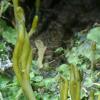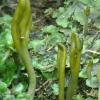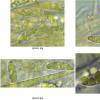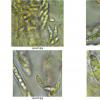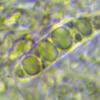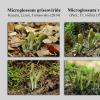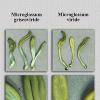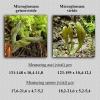
20-12-2025 23:08
Patrice TANCHAUDBonsoir, récolte sur sol sablonneux dans l'arri�

20-12-2025 15:47
Mirek GrycHi.These grew on pine wood that was heavily covere

18-12-2025 21:17
Pol DebaenstThe identification took me to Byssonectria deformi

15-12-2025 07:09
 Danny Newman
Danny Newman
indet. Rutstroemiaceae sp. on unk. fallen leavesMc

19-12-2025 10:10
Patrice TANCHAUDBonjour, récolte réalisée en milieu dunaire, a

18-12-2025 17:23
 Bruno Coué
Bruno Coué
Bonjour,je serais heureux d'avoir votre avis sur c

18-12-2025 18:07
Margot en Geert VullingsThese plumes were found on rotten wood.They strong

17-12-2025 18:35
 Michel Hairaud
Michel Hairaud
Bonjour à tous/Hi to everyone I am passing along
 Bonsoir à tous,
Bonsoir à tous,Depuis quelques années, je connais une grande station de Microglossum près de chez moi sur la berge raide et ombragée d'un petit ruisseau acide traversant une pessière. Les clavules du Microglossum poussent dans les tapis de l'hépatique à thalle Pellia epiphylla.
Je l'ai toujours appelé Microglossum viride mais avec l'absence de septa et des spores atteignant 25 µ pour certaines d'entre elles, le doute s'immisce en moi.
Qu'en pensez-vous ?
Bernard
Bonjour Bernard,
Intéressant, j'ai fait une récolte similaire et j'avais noté dans mon cahier, récolte immature. Ca vaudrait le coup que je remette la main dessus cette année en octobre.
Alain


Bernard

I think the species, described in Medardi as M. viride, might be rather Microglossum griseoviride (recent segregate species from M. viride) - at least spore size, habitat and photo correspond to that one better. For M. viride, Kucera et al. wrote spore size as (11–)18–22(–25) × 3 (4–)5–7 um, growing in wet localities, typically stream banks, they even mention the same liverwort.
Kucera, V. et al. (2014): Re-evaluation of the morphological variability of Microglossum viride and M. griseoviride sp. nov. Mycologia 106(2): 282-290.

Best regards,
Bernard

Hi Peter,
very interesting, your comparison. Your statement that you see no serious microscopic differences is especially noteworthy.
I, for my part, see no serious ecological differences. The growth between Pellia is not at all a proof for an ecological link with this liverwort. Microglossum viride s.l. (incl. griseovirens) grows on a wide range of findplaces, all on mediium to strongly acid soil, at medium moist to quite wet conditions, and very often between all kinds of mosses and liverworts.
I remember that once I found it (maybe then viride s.str., and all other then likely griseoviride) between Pellia, in the Rhön mountains. Unfortunately, this is too long ago to have a digital foto.
I approve of your statement that there is still a lot of work to do.
Slight color differences exist between other Microglossums, too (the olivaceum-nudipes-complex is still unsolved in my eyes, too) and if they stand alone, cannot serve to separate species.
Best regards from Lothar

For details see http://www.ascofrance.fr/search_forum/37300
I think the geology is different, I find M. griseoviride on more calcareous areas, while the true viride, which I never found myself but studied from samples of others, seems restricted to acidic soils.
Zotto

Hi Zotto,
the molecular difference convince me, and so do size differences if they are constant - as you write. I will have a closer look at future specimens.
The ecology does not convince me by now. I quite often found M. griseoviride (what I think it is now), always on more or less acidic soils, maybe not very very acid, but acid (I know the plant species and their ecological values quite good). And the findplaces are often (not always) in the vicinity of rivulets. The presence of Pellia epiphylla is an argument only in the case that the liverwort is really important for the growth of the Microglossum. As far as I read of such a proof, I will change my mind ...
Best regards from Lothar

as I wrote about that liverwort I'd like to comment on that a bit: I only quoted from the paper by Kucera et al., that it usually grows on localities of M. viride s.str. They didn't write about any connection between those two. I meant just that both species are hydrophilous and prefer the same habitat (river banks), which, according to that paper, is a habitat more typical for M. viride than M. griseoviride. Personally, I found only M. griseoviride once in a valley, Fagus forest with Carpinus, about 5 m above a small brook, along forest path (det. V. Kucera).

Hi Viktorie,
yes, as you write, the presence of Pellia is very likely only accidentally. And as you write, both taxa can be found at the site of rivulets on acid soil.
I found "viride" (s.l. - very likely mostly griseoviride) quite often, in deciduous (mostly) and coniferous forests, at quite dry sites (in moist years) and more often at moist places.
The DNA, the measures of spores, the color of fresh ascocarps: o.k., if there is a difference, we have two species.
Best regards from Lothar

